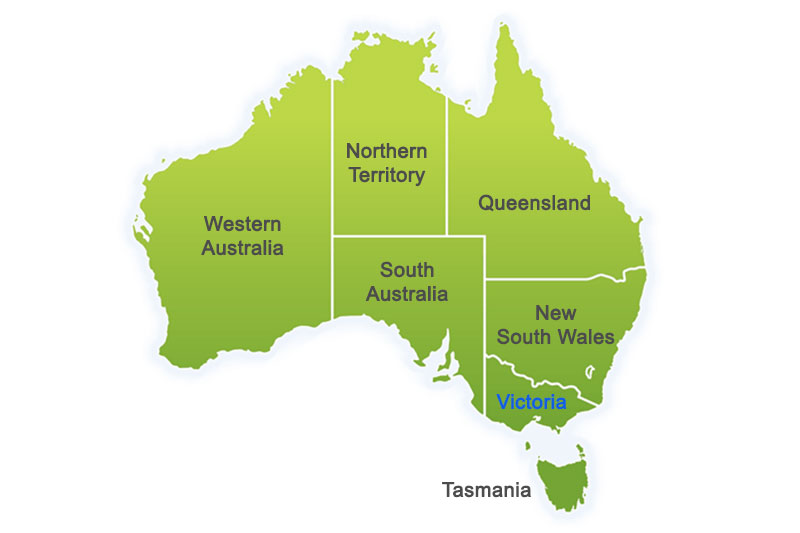
Victorian Road Safety Guide
Exploring Victoria by road is a great way to indulge in all the sights and scenery of this magnificent location within Australia.
So if you are heading to Victoria and your holiday will entail hitting the city streets or exploring the coastal or outback regions of the state, then we hope the following safety tips will offer you some great advice on ways you can stay safe on your journey.
Signs of Fatigue
No matter if your journey is a short or long adventure, feeling tired while driving places you, your passengers, and fellow motorists in danger.
Here is a list of symptoms that illustrate you may be experiencing fatigue and if so, it is strongly recommended that you take a break to rest and recharge.
- Constant yawning
- Drifting in the lane
- Sore or heavy eyes
- Trouble keeping your head up
- Delayed reactions
- Daydreaming
- Difficulty remembering the last few kilometres
- Variations in driving speed
Don't take risks while driving. It is better to be late to your destination than to never arrive at all!
Tips for City Driving
 City driving means you are navigating a journey that offers up an environment that boasts a busy atmosphere. With more traffic, pedestrians, public transport, and stationary vehicles lining streets and avenues, you may find you need a heightened awareness of your surroundings to ensure a safe driving experience.
City driving means you are navigating a journey that offers up an environment that boasts a busy atmosphere. With more traffic, pedestrians, public transport, and stationary vehicles lining streets and avenues, you may find you need a heightened awareness of your surroundings to ensure a safe driving experience.
One of the main differences for city driving in Victoria relates to sharing the roads with trams. The road rules change slightly and if you are a interstate or overseas travellers, you may find it confronting when navigating the city streets for the first time.
To help you to better understand how to share the roads with trams, check out the following video presented by Victorian Roads.
Victorian Driving & Safety Resources
Watch Out for School Zones
Take extra care around school zones and always obey the stipulated speed limit. With a build up of cars and lots of pedestrian activity, being extra vigilant is a must.
If you are new to the Victorian region, then here is a quick overview of the school zone driving restrictions.
40 km/h School Zones 40 km/h school zones are enforced on roads that have a standard speed limit of 60 and 70 km/h.
40 km/h school zones are enforced on roads that have a standard speed limit of 60 and 70 km/h.
During the hours of 8:00 am to 9:30 am and 2:30 pm and 4:00 pm on school days, the speed limit is 40 km/h on roads surrounding schools. On non-school days and outside of these allocated hours, the standard speed limit applies.
60 km/h School Zones On roads surrounding schools with a standard speed limit of 80, 90, and 100 km/h the speed limit for school safety is 60km/h.
On roads surrounding schools with a standard speed limit of 80, 90, and 100 km/h the speed limit for school safety is 60km/h.
This speed limit is enforced during the hours of 8:00 am to 9:30 am and 2:30 pm and 4:30 pm on school days. For non-school days and for times outside of these hours, the standard speed limit applies.
The Matter of Parking
Most will be thinking that there is nothing to consider when parking. The truth is that consideration needs to take place when accessing specific parking bays or areas.
Here's a quick summary of the different types of parking you may encounter within Victoria:
- Parallel Parking
When parking in a parallel parking zone, ensure you position your vehicle within the outlined bays. For areas where no parking bays are defined, you need to leave at least a space of one metre between the vehicle behind and in front of you.
- Angle Parking
If parking bays are positioned on an angle, please position your vehicle appropriately. - Centre of Road Parking
Where parking is in the middle a road, you must drive in and drive out. No reversing is permitted unless signed otherwise. - Metered Parking
Signs will stipulate if fees are applicable for parking. Please pay the appropriate costs at the allocated pay machines and adhere to information outlined with respect to time limits and where you are to place your ticket. - Disability Parking
Parking in a disabled parking bay is only for appropriate permit holders.
For a comprehensive list of parking information, please visit the Victorian Roads website.
Basic Road Rules
Many of us are eager to quickly say that we know the road rules. Sometimes we can become complacent as our driving confidence grows.
Check out the following basic road rules and see how many you may not adhere to on a daily basis.
- Professional drivers (truck, bus, and taxi) and P-platers must have zero blood alcohol concentration.
- It is illegal to drive under the influence of drugs. If you are on any forms of medication, ensure you review their side effects and if your ability to operate machinery efficiently may be comprised, then please do not drive a vehicle.
- When emergency vehicles have a siren sounding and / or displaying blue and red lights, vehicles must move out of the way.
- When entering a roundabout, you must give way to any vehicle entering the roundabout or tram entering or approaching the roundabout.
- Victoria has both standard and electronic speed signs that are enforced.
- Seat belts must be worn at all times.
- Don't use a mobile phone while driving.
- Always indicate to advise drivers of your intentions.
Heard of the Melbourne hook turn but unsure what it means? The following video provides more information on this road rule.
Thinking you need to brush up on your road rules?
Head on over to the Road Rules section of the Victorian Roads website.
Please Note: Car Rental Buddy provides the above information as a resource only. We advise readers to view the current and up-to-date road safety guides and road rules for each State by visiting their associated transport website.
